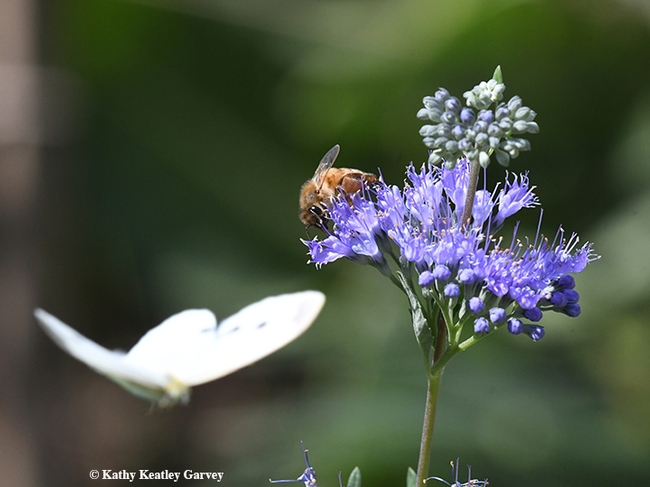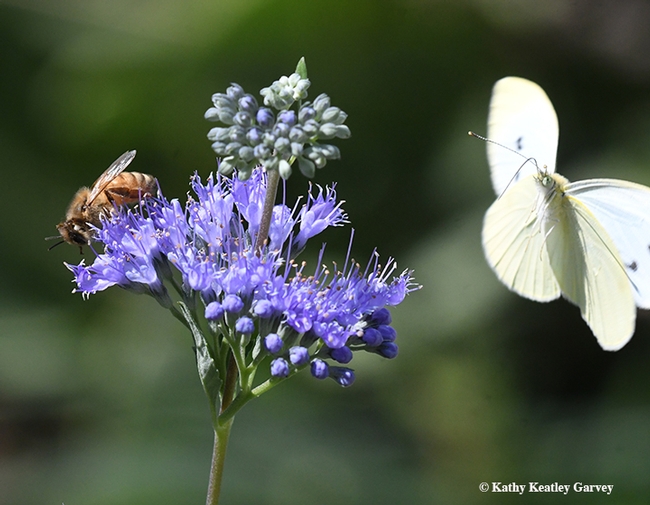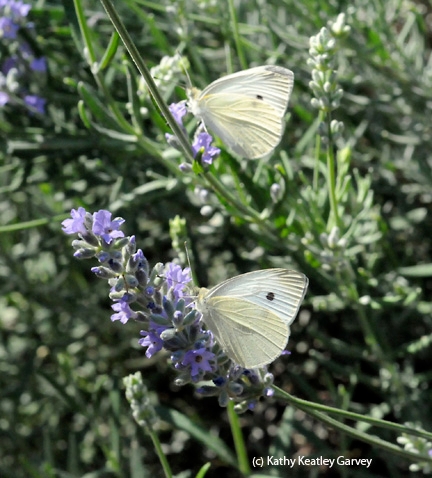- Author: Kathy Keatley Garvey
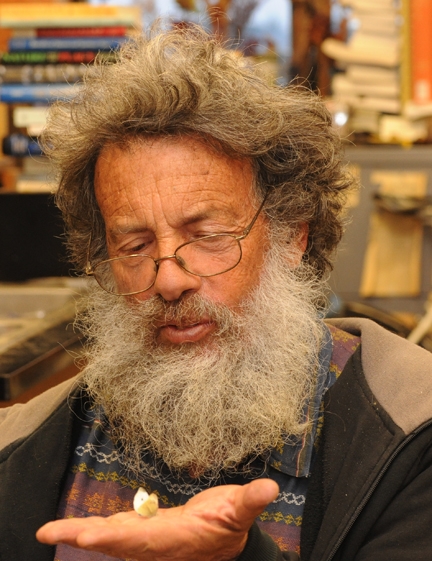
If you collect the first cabbage white butterfly of the year in the three-county area of Sacramento, Solano and Yolo, you'll win a pitcher of beer or its equivalent, compliments of Art Shapiro, UC Davis distinguished professor of evolution and ecology.
Shapiro is sponsoring his 48th annual Beer-for-a-Butterfly Contest and it's all in the name of research--to determine the first flight of the cabbage white butterfly, Pieris rapae. Since 1972, when he launched the contest, the first flight has varied from Jan. 1 to Feb. 22, averaging about Jan. 20.
The butterfly inhabits vacant lots, fields and gardens where its host plants, weedy mustards, grow. The male is white. The female is often slightly buffy; the "underside of the hindwing and apex of the forewing may be distinctly yellow and normally have a gray cast,” Shapiro said. “The black dots and apical spot on the upperside tend to be faint or even to disappear really early in the season.”
The contest rules include:
- It must be an adult (no caterpillars or pupae) and be captured outdoors.
- It must be delivered alive to the department office, 2320 Storer Hall, UC Davis, during work hours, 8 a.m. to 5 p.m., Monday through Friday, with the full data (exact time, date and location of the capture) and your name, address, phone number and/or e-mail. The receptionist will certify that it is alive and refrigerate it. (If you collect it on a weekend or holiday, keep it in a refrigerator; do not freeze. A few days in the fridge will not harm it, Shapiro says.)
- Shapiro is the sole judge.
Shapiro, who maintains a research website at http://butterfly.ucdavis.edu, usually wins his own contest and did so again in 2019. He collected the winner near the Suisun Yacht Club, Suisun City, Solano County, at 1:12 p.m., Friday, Jan. 25.
Shapiro has been defeated only four times, and all by UC Davis graduate students: Jacob Montgomery in 2016; Adam Porter in 1983; and Sherri Graves and Rick VanBuskirk each defeated him in the late 1990s.
The list of winners, dates and locations since 2010:
- 2019: Jan. 25: Art Shapiro collected the winner near the Suisun Yacht Club,Solano County
- 2018: Jan. 19: Art Shapiro collected the winner in West Sacramento, Yolo County
- 2017: Jan. 19: Art Shapiro collected the winner on the UC Davis campus
- 2016: Jan. 16: Jacob Montgomery, UC Davis graduate student, collected the winner in west Davis
- 2015: Jan. 26: Shapiro collected the winner in West Sacramento
- 2014: Jan. 14: Shapiro collected the winner in West Sacramento
- 2013: Jan. 21: Shapiro collected the winner in West Sacramento
- 2012: Jan. 8: Shapiro collected the winner in West Sacramento
- 2011: Jan. 31: Shapiro collected the winner in Suisun, Solano County
- 2010: Jan. 27: Shapiro collected the winner in West Sacramento
The 2019 winner was the earliest recorded in Suisun City in 47 seasons, said Shapiro. That day he noticed dandelions, mustard, radish and mallow in bloom and a few Picris (sunflower family) in the area. "But near the Suisun Yacht Club (703 Civic Center Blvd., Suisun City) at 1:12 p.m. I saw a rapae. It didn't land and I had to take it in the air. It's a small and very heavily infuscated male.” It had just eclosed that day, he said.
The UC Davis professor has monitored butterfly population trends on a transect across central California since 1972 and records the information on his research website. His 10 sites stretch from the Sacramento River Delta through the Sacramento Valley and Sierra Nevada mountains to the high desert of the Western Great Basin. He visits his sites every two weeks "to record what's out" from spring to fall, weather permitting. He has studied more than 160 species of butterflies in his transect. The largest and oldest database in North America, it was recently cited by British conservation biologist Chris Thomas in a worldwide study of insect biomass.
Shapiro and illustrator Timothy D. Manolis co-authored A Field Guide to Butterflies of the San Francisco Bay and Sacramento Valley Regions, published in 2007 by the University of California Press. Shapiro is a Fellow of the American Association for the Advancement of Science, the Royal Entomological Society, and the California Academy of Sciences.
Meanwhile, if you want to learn more about this butterfly, see the data on the UC Integrated Pest Management Program website. In its larval stage (cabbageworm), it's a pest.
And if you want a free pitcher of beer (or its equivalent), don't leave home without your net!
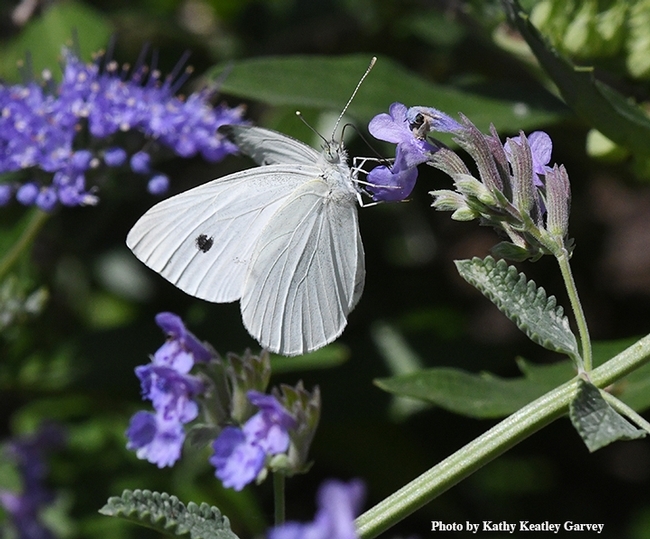
- Author: Kathy Keatley Garvey
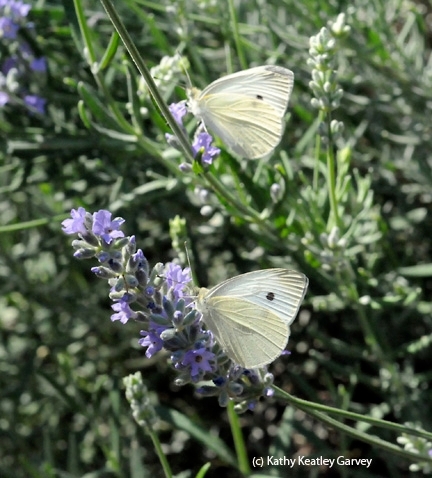
Art Shapiro hasn't found it yet, and neither has anyone else.
So you can keep looking.
If you collect it, and it's verified as the first one of the year, you'll win a pitcher of beer or its equivalent. Suds for a bug.
Shapiro, UC Davis distinguished professor of evolution and ecology, launched the contest, "A Beer for a Butterfly" in 1972 to determine the first flight of Pieris rapae. It's all part of his ongoing scientific research. Since 1972, the first flight has varied from Jan. 1 to Feb. 22, averaging about Jan. 20.
Shapiro, who has monitored butterfly populations in Central California for more than four decades and maintains a website where he posts his research, usually wins his own contest because he knows where to look. He's been defeated only four times, and all by UC Davis graduate students.
The 2018 winner? Shapiro collected that one on Friday, Jan. 19 in a mustard patch near railroad tracks in West Sacramento, Yolo County, one of his frequented sites.
But he doesn't expect to find the winner there this year.
"The numbers were very low in West Sacramento last fall and there was no germination, so the only host plants available were Lepidium latifolium and a very few Hirschfeldia," he says. "I'm expecting a VERY poor spring brood there and elsewhere."
The contest rules include:
- It must be an adult (no caterpillars or pupae) and be captured outdoors.
- It must be delivered alive to the department office, 2320 Storer Hall, UC Davis, during work hours, 8 a.m. to 5 p.m., Monday through Friday, with the full data (exact time, date and location of the capture) and your name, address, phone number and/or e-mail.
The receptionist will certify that it is alive and refrigerate it. (If you collect it on a weekend or holiday, keep it in a refrigerator; do not freeze. A few days in the fridge will not harm it, Shapiro says.) - Shapiro is the sole judge.
The butterfly inhabits vacant lots, fields and gardens where its host plants, weedy mustards, grow. The male is white. The female is often slightly buffy; the "underside of the hindwing and apex of the forewing may be distinctly yellow and normally have a gray cast,” Shapiro said. “The black dots and apical spot on the upperside tend to be faint or even to disappear really early in the season.”
Any predictions for when we can say "We have a winner!"
"No hope before mid-month," Shapiro says. "I'm forecasting Jan. 27."

- Author: Kathy Keatley Garvey
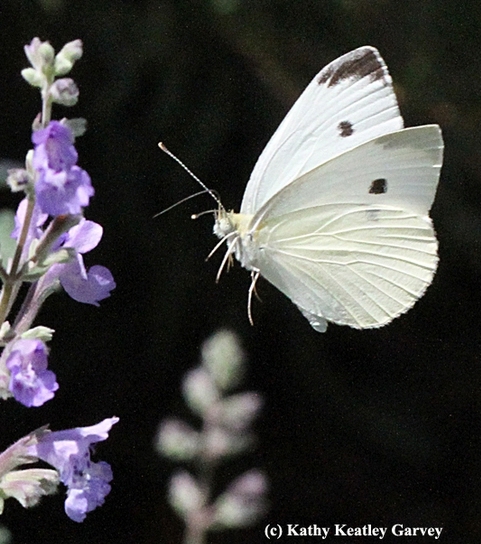
You can exchange suds for a bug.
That would be a cabbage white butterfly for a pitcher of beer or its equivalent.
And it's all in the interest of science.
Art Shapiro, distinguished professor of evolution and ecology at the University of California, Davis, is sponsoring his annual “Beer for a Butterfly Contest,” starting Jan. 1.
The first person in the three-county area of Sacramento, Yolo and Solano who collects the first cabbage white butterfly, Pieris rapae, of the new year--outdoors--and drops it off live in the Department of Evolution and Ecology office--wins a pitcher of beer or its equivalent.
Shapiro, who maintains a research website at http://butterfly.ucdavis.edu, launched the contest in 1972 as part of his scientific research to record the first flight of the butterfly in the three-county area. It's a contest he usually wins. He has been defeated only four times, and all by UC Davis graduate students.
Since 1972, the first flight has varied from Jan. 1 to Feb. 22, averaging about Jan. 20.
In 2018, he collected the winner at 11:23 a.m. Friday, Jan. 19 in one of his frequented sites—a mustard patch by railroad tracks in West Sacramento, Yolo County.
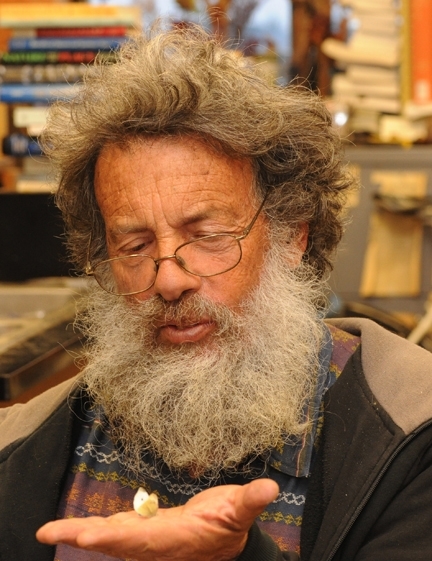
He described the butterfly as quite yellow instead of white. “Cold weather promotes sepiapterin formation, so early ones are often quite yellow.”
This is the eighth year since 2010 that the winning butterfly has been collected in Yolo County. In 2017, Shapiro found the winner on the UC Davis campus; in 2016, graduate student Jacob Montgomery netted the winner outside his home in west Davis, and Shapiro collected all five winners from 2012 to 2015 in West Sacramento. He found the 2011 winner in Suisun, Solano County.
Shapiro's graduate student, Adam Porter, defeated him in 1983. Two other graduate students, Sherri Graves and Rick VanBuskirk, each won in the late 1990s.
The butterfly inhabits vacant lots, fields and gardens where its host plants, weedy mustards, grow. The male is white. The female is often slightly buffy; the "underside of the hindwing and apex of the forewing may be distinctly yellow and normally have a gray cast,” Shapiro said. “The black dots and apical spot on the upperside tend to be faint or even to disappear really early in the season.”
In its caterpillar stage, Pieris rapae is a pest of cole crops and is known as "imported cabbageworm." The larvae "chew large, irregular holes in leaves, bore into heads, and drop greenish brown fecal pellets that may contaminate the marketed product, according to the UC Statewide Integrated Pest Management Program's website.) "Seedlings may be damaged, but most losses are due to damage to marketed parts of the plant."
Ready to join the hunt for the first-of-the-year cabbage white butterfly? And try to defeat the good professor?
The contest rules include:
- It must be an adult (no caterpillars or pupae) and be captured outdoors.
- It must be delivered alive to the department office, 2320 Storer Hall, UC Davis, during work hours, 8 a.m. to 5 p.m., Monday through Friday, with the full data (exact time, date and location of the capture) and your name, address, phone number and/or e-mail. The receptionist will certify that it is alive and refrigerate it. (If you collect it on a weekend or holiday, keep it in a refrigerator; do not freeze. A few days in the fridge will not harm it, Shapiro says.)
- Shapiro is the sole judge.
The list of winners, dates and locations since 2010:
- 2018: Jan. 19: Art Shapiro collected the winner in West Sacramento, Yolo County
- 2017: Jan. 19: Art Shapiro collected the winner on the UC Davis campus, Yolo County
- 2016: Jan. 16: Jacob Montgomery, UC Davis graduate student, collected the winner in west Davis
- 2015: Jan. 26: Shapiro collected the winner in West Sacramento
- 2014: Jan. 14: Shapiro collected the winner in West Sacramento
- 2013: Jan. 21: Shapiro collected the winner in West Sacramento
- 2012: Jan. 8: Shapiro collected the winner in West Sacramento
- 2011: Jan. 31: Shapiro collected the winner in Suisun, Solano County
- 2010: Jan. 27: Shapiro collected the winner in West Sacramento
Shapiro has monitored butterfly population trends on a transect across central California for 46 years and records the information on his research website at http://butterfly.ucdavis.edu/. His 10 sites stretch from the Sacramento River Delta through the Sacramento Valley and Sierra Nevada mountains to the high desert of the Western Great Basin. Shapiro visits his sites every two weeks "to record what's out" from spring to fall. The largest and oldest database in North America, it was recently cited by British conservation biologist Chris Thomas in a worldwide study of insect biomass.
Shapiro, a member of the UC Davis faculty since 1971 and author of the book, Field Guide to Butterflies of the San Francisco Bay Area and Sacramento Valley Regions, has studied a total of 163 species of butterflies in his transect.
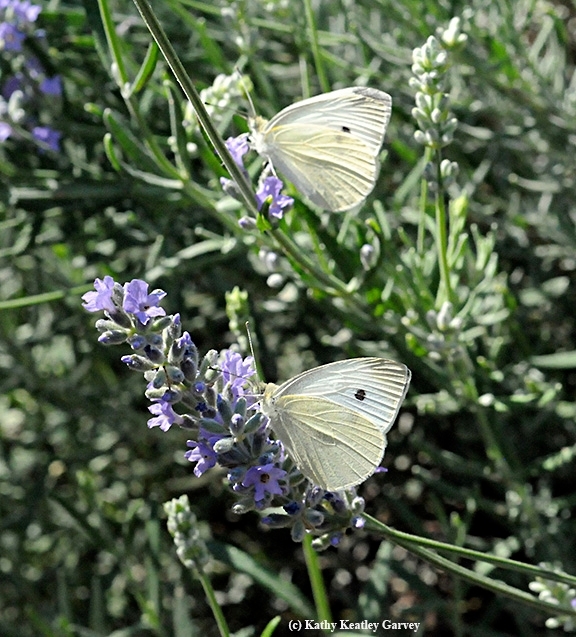
- Author: Kathy Keatley Garvey
If you've been looking for that cabbage white butterfly in the three-area county of Sacramento, Yolo and Solano to win UC Davis Professor Art Shapiro's "Beer for a Butterfly" contest, there's still hope.
Shapiro hasn't found it, either.
Butterflies aren't flying due to the elements: the rain, the cold and the fog.
Shapiro, distinguished professor of evolution and ecology launched the "Beer for a Butterfly" contest back in 1972 as part of his scientific research. If you collect the first cabbage white butterfly (Pieris rapae) of the year, you can trade "the bug for suds."
Shapiro is offering a pitcher of beer (or its equivalent) for the first cabbage white butterfly collected in 2018 in any one of the three counties. “Since 1972, the first flight has varied from Jan. 1 to Feb. 22, averaging about Jan. 20,” he says.
The butterfly inhabits vacant lots, fields and gardens where its host plants, weedy mustards, grow. What does it look like? It's a white butterfly with black dots on the upperside (which may be faint or not visible in the early season). It inhabits vacant lots, fields and gardens where its host plants, weedy mustards, grow. The male is white. The female is often slightly buffy; the "underside of the hindwing and apex of the forewing may be distinctly yellow and normally have a gray cast,” Shapiro said. “The black dots and apical spot on the upperside tend to be faint or even to disappear really early in the season.”
In its caterpillar stage, Pieris rapae is a pest. (See cabbageworm on the UC Statewide Integrated Pest Management Program website.)
Meanwhile, the contest rules include:
- It must be an adult (no caterpillars or pupae) and be captured outdoors.
- It must be brought in alive to the department office, 2320 Storer Hall, UC Davis, during work hours, 8 a.m. to 5 p.m., Monday through Friday, with the full data (exact time, date and location of the capture) and your name, address, phone number and/or e-mail. The receptionist will certify that it is alive and refrigerate it. (If you collect it on a weekend or holiday, keep it in a refrigerator; do not freeze. A few days in the fridge will not harm it.)
- Shapiro is the sole judge.
Shapiro, who is in the field more than 200 days of the year, monitoring butterflies of central California (see his website), knows where to find the cabbage whites and usually wins the contest. He has been defeated only four times since 1972--and all by UC Davis graduate students.
The professor collects many of the winners in mustard patches near railroad tracks in West Sacramento, Yolo County. Over the last eight years, five came from West Sacramento; two in Davis, Yolo County; and one in Suisun, Solano County.
The dates and locations:
- 2017: Jan. 19: Art Shapiro collected the winner on the UC Davis campus
- 2016: Jan. 16: Jacob Montgomery, UC Davis graduate student, collected the winner in west Davis
- 2015: Jan. 26: Shapiro collected the winner in West Sacramento
- 2014: Jan. 14: Shapiro collected the winner in West Sacramento
- 2013: Jan. 21: Shapiro collected the winner in West Sacramento
- 2012: Jan. 8: Shapiro collected the winner in West Sacramento
- 2011: Jan. 31: Shapiro collected the winner in Suisun, Solano County
- 2010: Jan. 27: Shapiro collected the winner in West Sacramento
The search continues!
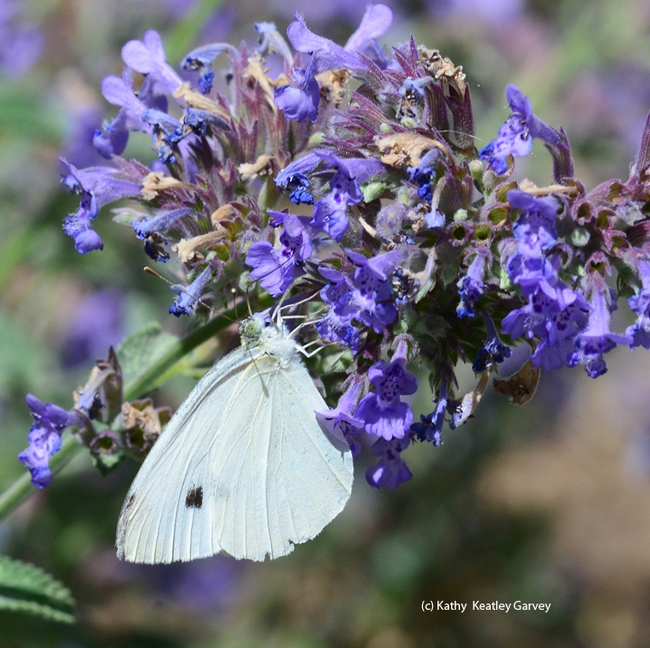
- Author: Kathy Keatley Garvey
Ready? Set? Go?
The search party is almost ready to start. If you're lucky, you'll net the prize before Art Shapiro does.
Art Shapiro, distinguished professor of evolution and ecology at the University of California, Davis, has announced his annual “Butterfly for a Beer" contest: the person who collects the first cabbage butterfly (Pieris rapae) of the year in one of three counties—Sacramento, Yolo and Solano—will receive a pitcher of beer or its equivalent. The butterfly must be collected outdoors and delivered live to the Department of Evolution and Ecology, Room 2320 of Storer Hall. (See rules)
As you may remember, Shapiro launched the contest in 1972 as part of his scientific research. Since 1972, the first flight of the cabbage white butterfly has varied from Jan. 1 to Feb. 22, averaging about Jan. 20. He predicts that the first butterfly of 2018 may be collected as soon as Jan. 5 or 6, “depending on the weather.”
He's usually the winner; he's been defeated only four times, and then by UC Davis graduate students.
And yes, he's had some humorous moments.
Some folks contact him way way way after it's all over and done (like in the spring!) with a collected specimen and ask him if they've won.
We thought about declaring ourselves the winner to the good professor after photographing dozens of them all spring and into summer and late fall and encountering hundreds more.
Meanwhile, starting Jan. 1, the cabbage white will be the most sought-after insect in the three-county area of Sacramento, Yolo and Solano.
They're not easy to find in January. Neither are they always easy to photograph seasonally. They seem to flutter out of your viewfinder just as you're about to focus on them. Wait, wait, come back! I'm not through yet!
Other times, they photobomb your long-awaited image, like last summer when I was zeroing in on a solo bee on a bluebeard (Caryopteris x clandonensis).
Webster defines photobombing this way: "to spoil a photograph of by unexpectedly appearing in the camera's field of view as the picture is taken, typically as a prank or practical joke."
In this case, they both wanted the same nectar. The photo amounted to a "two-fer"--two insects for the price (prize?) of one.
And then the determined cabbage white butterfly circled the hapless honey bee for another photobomb opportunity. Aren't you done, yet?
